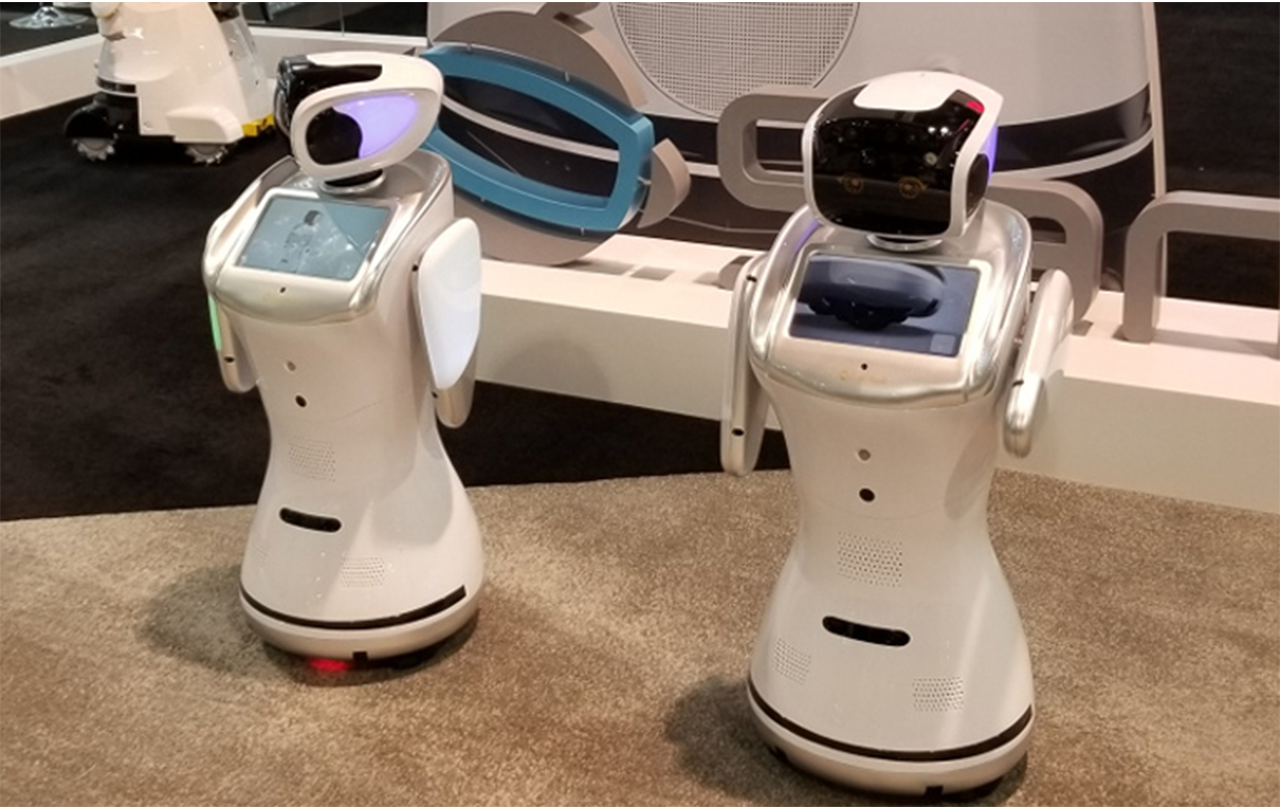
4/10/2024-REXASI-PRO at Coffeetech by Confindustria Genova and DIH Liguria
On 4 October 2024 in Genoa, at the Sala Consiglio of Confindustria Genova, via San Vincenzo 2, from 8 to 9 a.m., for CoffeeTech, Vanessa

 During the peak of COVID-19, in March-June 2020, six humanoid robots helped to make the lives of patients in isolation and the work of hospital staff less burdensome.
During the peak of COVID-19, in March-June 2020, six humanoid robots helped to make the lives of patients in isolation and the work of hospital staff less burdensome.
The six robots were placed by Omitech srl in the isolation rooms at the Circolo and Fondazione Macchi hospital in Asst Sette Laghi di Varese (one robot for every 2 beds) and allowed remote monitoring of patients’ conditions, measuring their vital parameters, answering their questions: thanks to the camera with which each robot is equipped, staff could see the patient remotely through the robot’s monitor, in telepresence and without physically accessing the room.
The robots were placed in the High Intensity Medicine department of the Assst Sette Laghi Hospital in Varese.
Moreover, through the robots, doctors and nurses could also talk to the patient who, if not in assisted ventilation, could answer through voice messages: all patients confirmed that they felt a little less alone, thanks to the robots.
An indirect effect was to reduce the consumption of Protective Devices and thus also optimize the time of doctors and nurses, to maximize monitoring and care activities, to the benefit of patients.
In a statement to ANSA, Francesco Dentali, director of the department of High-Intensity Medicine, “their presence seeks to resolve a need that has arisen in caring for these patients: long isolation”.
We asked Dr. Matteo Cestari, CEO of Omnitech, to talk to us about robot programming and its impact on patients. His answers reveal the shift in focus from robot programming itself to human-robot interaction problems. As Matteo Cestari said, “the problem was not programming the robot, it was understanding humans”.
Here Mr. Matteo Cestari’s interview text Matteo_Cestari_text

On 4 October 2024 in Genoa, at the Sala Consiglio of Confindustria Genova, via San Vincenzo 2, from 8 to 9 a.m., for CoffeeTech, Vanessa

The European Robotics Week (ERW) will take place from 15 to 24 November 2024. Start now to imagine your events so that they are visible

A free webinar (in Italian) to talk about how to make roads and driving accessible to people with disabilities, but also about the procedures to

Are you ready to dive into the oceans with your underwater robot? The FIRST® LEGO® Italy 2024-25 will open up the ocean depths to you
Write here your email address. We will send you the latest news about Scuola di Robotica without exaggerating! Promised! You can delete your subscription whenever you want clicking on link in the email.

© Scuola di Robotica | All Rights Reserved | Powered by Scuola di Robotica | info@scuoladirobotica.it | +39.348.0961616 +39.010.8176146 | Scuola di robotica® is a registered trademark